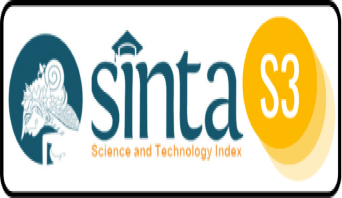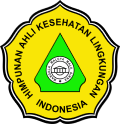POTENSI AIR RENDAMAN DAUN TEMBAKAU (Nicotiana tabacum) SEBAGAI BIOINSEKTISIDA KECOA (Periplaneta americana)
DOI:
https://doi.org/10.26630/rj.v14i1.2145Keywords:
Tobacco, Bio-insecticides, CockroachesAbstract
Cockroaches are animals in residential areas that act as vectors of diseases, including cholera, typhus, dysentery and diarrhea, and are often found in a common public places. Tobacco (Nicotiana tabacum) contains nicotine so that it is a type of plant that can be used as a bio-insecticide to control insects.
The experiment used a pretest-posttest control group design, with 9 replications. The test material used was tobacco leaf (Nicotiana tabacum) immersion water with immersion length variations of 2, 4, and 6 days. The cockroach being used was 810 Periplaneta americana obtained from residential areas. The data obtained were analyzed using the Oneway ANOVA test, Least Square Difference (LSD) and probit analysis.
The results suggested that the highest percentage of cockroach (Periplaneta americana) mortality was in the use of 6 days immersed tobacco, by 32%. The results of the statistical analysis suggested a significant difference (p-Value = 0.000) in the treatment and control groups. However, there were no significant differences between treatment groups (p-value = 0.285). While the results of the probid analysis acquire the LD50 at 2.925% concentration.
Immersed Tobacco leaf (Nicotiana tabacum) can be used as an alternative to bio-insecticides in cockroach control (Periplaneta americana). Further research is necessary to obtain significant results, in terms of variations in treatment, variations in contact time, and homogeneous test materials.Â
References
Aji, A., Maulinda, L., & Amin, S. (2015). Isolasi Nikotin Dari Puntung Rokok Sebagai Insektisida. Jurnal Teknologi Kimia Unimal, 4(1), 100–120.
Amalia, H., & Harahap, I. S. (2015). Preferensi Kecoa Amerika Periplaneta americana (L.) (Blattaria: Blattidae) terhadap Berbagai Kombinasi Umpan. Jurnal Entomologi Indonesia, 7(2), 67. https://doi.org/10.5994/jei.7.2.67
Arifah, F. G., Hestiningsih, R., & Rahadian, R. (2016). Preferensi Kecoak Amerika Periplaneta americana (L.) (Blattaria : Blattidae) terhadap Baiting Gel. Retrieved August 23, 2020, from Jurnal Kesehatan Masyarakat Universitas Diponegoro website: https://ejournal3.undip.ac.id/index.php/jkm/article/view/14084/13619
Fahmiyah, A. N. R. (2016). Efektifitas Ekstrak Daun Tembakau (Nicotiana tabaccum) dengan Ekstrak Daun Sirsak (Annona muricata l) terhadap Kematian Lalat Rumah (Musca domestica). UIN Alaudin Makassar. https://doi.org/https://doi.org/10.3929/ethz-b-000238666
Hasibuan, R. (2015). Insektisida Organik Sintetik dan Biorasional. In Bandar Lampung : Plantaxia. Xplantaxia.
Jayanti, I. A. (2019). Pelet Rimpang Lengkuas Merah (Alpinia Purpurata K. Schum) Berpotensi Sebagai Insektisida Alami Terhadap Kecoa Dewasa Periplaneta Americana. Surabaya: Poltekkes Kemenkes Surabaya.
Muhadir, A. (2014). Pedoman Pengendalian Kecoa. Jakarta: Direktor Jendral Pengendalian Penyakit Dan Penyehatan Lingkungan Kementrian Kesehatan RI.
Rini, M. S., Rahardian, R., Hadi, M., & Zulfiana, D. (2016). Uji Efikasi Beberapa Isolat Bakteri Entomopatogen Terhadap Kecoak (Orthoptera) Periplaneta americana (L.) dan Blatella germanica (L.) dalam Skala Laboratorium. Jurnal Biologi, 5(2), 1–10.
Sari, R. (2018). Efektivitas rendaman Batang dan Daun Tembakau (Nicotiana tobacum L,1753) Terhadap Pengendalian Hama Kutu Daun (Aphis gossypii Glov,1877). Yogyakarta: Programstudi Biologi Fakultas Sains Dan Teknologi Uin Sunan Kalijaga.
Sarwono, J., & Budiono, H. (2012). Statistik Terapan, Aplikasi Untuk Riset Skripsi, Tesis dan Disertasi menggunakan SPSS, AMOS dan Excel. Jakarta: PT. Alex Media Komputindo. Retrieved from https://books.google.co.id/books?id=dNtMDwAAQBAJ&printsec=frontcove r&dq=analisis+data+uji+kruskal+wallis&hl=id&sa=X&ved=0ahUKEwjg0sfN6oPfAhUYSo8KHQ_DCSAQ6AEILjAB#v=onepage&q=uji kruskal&f=false.
Sumantri, A. (2013). Metodologi penelitian kesehatan kencana:jakarta. Jakarta: PT. Rineka Cipta.
Susanti, L., & Boesri, H. (2012). Toksisitas Biolarvasida Ekstrak Tembakau Dibandingkan dengan Ekstrak Zodia terhadap Jentik Vektor Demam Berdarah Dengue (Aedes Aegypti). Bulletin Penelitian Kesehatan, 40(2), 75–84.
Susilowati, E. Y. (2006). Identifikasi Nikotin Dari Daun Tembakau (Nicotiana Tabacum) Kering Dan Uji Efektivitas Ekstrak Daun Tembakau Sebagai Insektisida Penggerek Batang Padi (Scirpophaga innonata). Jurnal Tidak Diterbitkan.
Utami, I., & Cahyati, W. H. (2017). Efektivitas Daun Citrus Hystrix Dan Daun Syzygium Polyanthum Sebagai Zat Penolak Alami Periplaneta Americana (L.). Higeia Journal Of Public Health Research And Development, 1(1), 22–28.
Wuragil, D. V., & Ngadino, M. (2019). Potensi Ekstrak Daun Tembakau (Nicotiana Tabacum L.) Sebagai Biolarvasida Nyamuk Culex Sp. Seminar Nasional Kesehatan Poltekkes Kemenkes Surabaya, 46–49. Surabaya: Politeknik Kesehatan Kementrian Kesehatan Surabaya Jurusan Kesehatan Lingkungan Surabaya.
Downloads
Published
How to Cite
Issue
Section
License
Copyright (c) 2020 Ruwa Jurai: Jurnal Kesehatan Lingkungan

This work is licensed under a Creative Commons Attribution-NonCommercial 4.0 International License.

Ruwa Jurai: Jurnal Kesehatan Lingkungan is licensed under a Creative Commons Attribution-NonCommercial 4.0 International License.
Authors who publish with this journal agree to the following terms:
- Authors retain copyright and grant the journal right of first publication with the work simultaneously licensed under a Creative Commons Attribution-Non Commercial License that allows others to share the work with an acknowledgment of the work's authorship and initial publication in this journal.
- Authors are able to enter into separate, additional contractual arrangements for the non-exclusive distribution of the journal's published version of the work (e.g., post it to an institutional repository or publish it in a book), with an acknowledgment of its initial publication in this journal.
- Authors are permitted and encouraged to post their work online (e.g., in institutional repositories or on their website) prior to and during the submission process, as it can lead to productive exchanges, as well as earlier and greater citation of published work.









